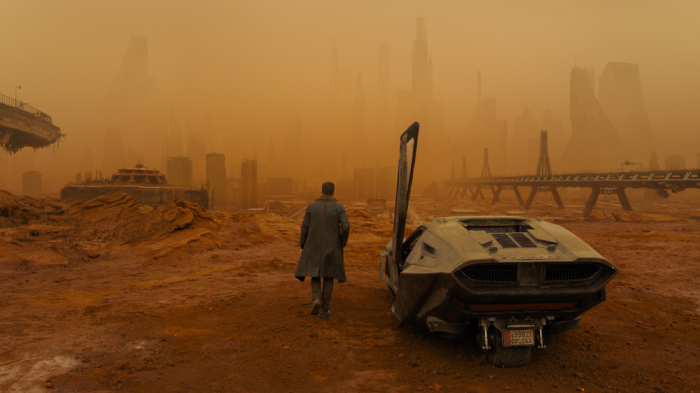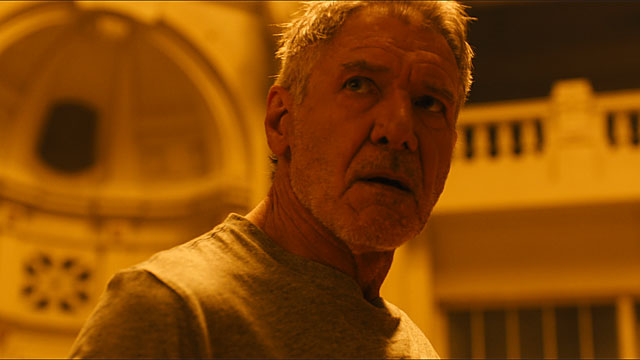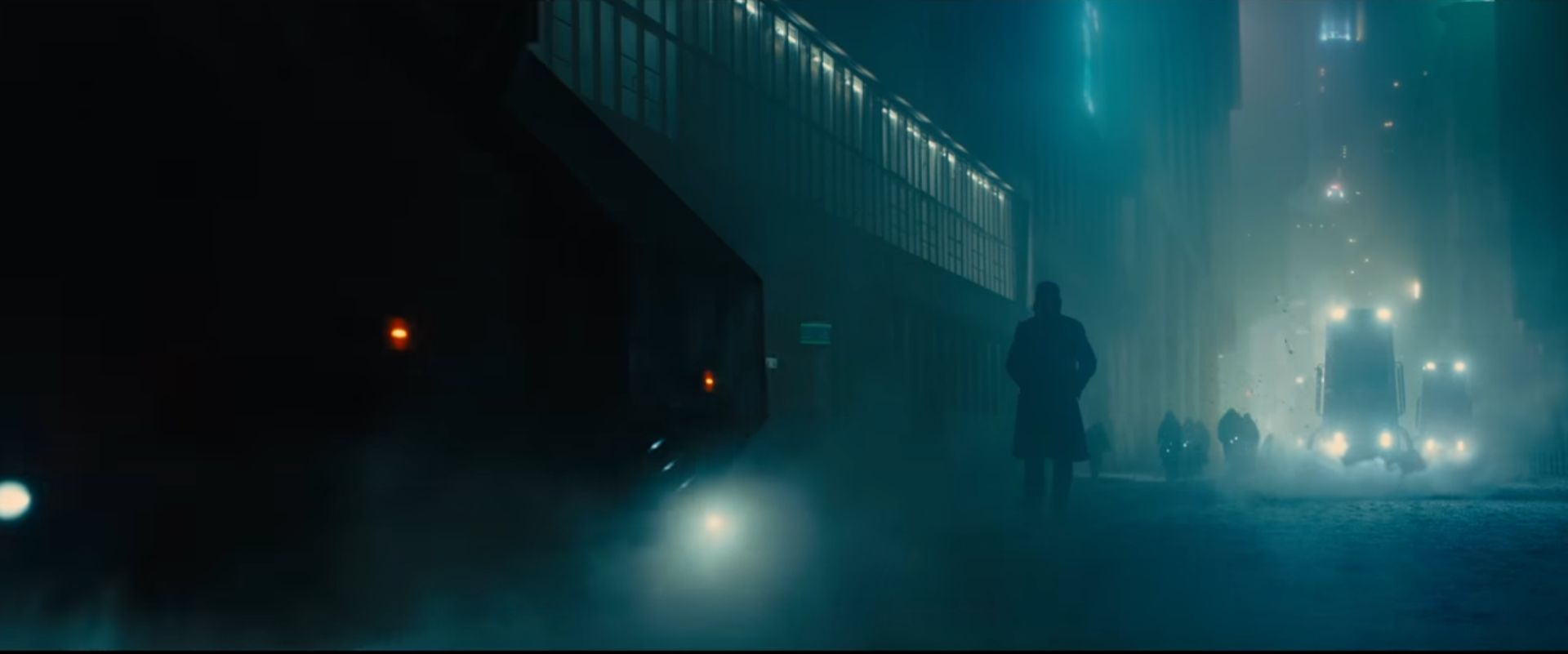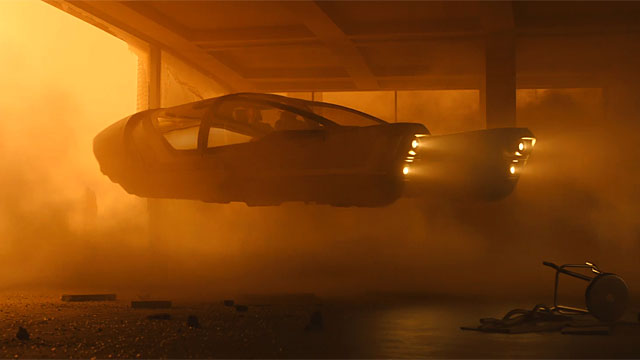Review: BLADE RUNNER 2049

Quick take: Pretty pictures, fan service, plot holes, and ret-conning make for a long sit. In other words? An all too typical Hollywood reboot/remake of beloved intellectual property (IP) dredged up from the deep cultural antiquity of the 1980s.
Having said that, I won’t say I didn’t enjoy experiencing the movie. Blade Runner 2049, on which no expense appears to have been spared, looks and sounds astounding on the big screen. Unlike most of the recent superhero movies, which have become next to impossible to tell apart, and the dreadful Star Wars remakes, it doesn’t feel like a complete burn.
Perhaps Blade Runner’s biggest problem—a bloated running time—stems from an attempt to lend gravitas to another reboot, or perhaps live up to the cult status the original production would acquire over time. In any case, a ponderous pace and overall dour tone are hardly the stuff of a modern, four-quadrant movie blockbuster, which accounts for its soft showing at the box office.
SPOILERS AHEAD: A lengthy title card brings us up to speed on the ensuing thirty years of future-history that followed the events of the first movie (1982 looking ahead to 2019), as well to fill in newcomers on what’s happening in this futuristic, technological dystopia.
Replicants, exceedingly lifelike AI bots, represent both a boon and a threat to humanity—”more human than humans” was the Tyrell Corporation’s selling point in the first picture. It seems in the years since that replicants continue to be used for various tasks, including the old “blade runner” cop role: enforcers who must hunt down and “retire” misbehaving replicants before they mix in with the general population and cause existential confusion among the real humans. It’s mainly old replicants still on the loose, so that means we need modern replicants to hunt them down.

Images ©2017 Warner Brothers
Or at least that’s what I think is going on.
In truth, it’s essentially the same story as before—what a shock. A cop, K (Ryan Gosling), works the beat of tracking down replicants who have gone into hiding to attempt to live as humans do—working, eating, evening falling in love, as we’ll see. (Why they can’t be left alone isn’t entirely clear, until a ridiculous, ret-conned plot point makes it apparent why the powers that be would be so concerned). He’ll kill his fellow bots if he has to, but would rather they come along peacefully to be turned back into dust.
At first K doesn’t seem to struggle with any existential nonsense—he knows what he is, and what he does, and as long as he’s willing to be “brought back to baseline,” a kind of mental conditioning by his bosses at the LAPD, he’s fine with doing his job, going home and having a nice dinner served by his AI housemate and lover (Ana de Armas), for whom he brings a gift: an “emanator” which will allow her to move around with K untethered from her electronic base in his coffin-like apartment, and allows this non-corporeal character the freedom to become an important plot point.

Images ©2017 Warner Brothers
The discovery of a buried box of bones, however—replicant bones, as these things aren’t robots but actual, if genetically modified, flesh and blood—sets in motion a plot that will send K in search not only of a mysterious child who seems to have been born to a replicant (wait—what?), but also on the hunt for the original star of the first movie, the iconic Harrison Ford, continuing to cash enormous paychecks by revisiting his signature roles from forty years ago. In this case, at least, he brings a world-weary emotional and gravity to his scenes clustered near the end of the film’s almost three-hour running time. Ford has real acting chops, and I was thankful to see him well used here.
Sure, there’s some emotion at stake. K begins to question his identity, of course, which means he’ll be running afoul of his bosses just the way Ford’s Rick Deckard did back in 1982, er, 2019, I mean. And again, the images are quite stunning, mostly in a manner horrifying to anyone who likes trees and grass and the birds singing a pretty song. But overall, its plot is too easy to guess, and its scenes go on longer than necessary, and after awhile, one begins to question why we need to see the flying cars taking off and landing so much.

Images ©2017 Warner Brothers
The movie’s message—environmental degradation will eventually force us all to become machines simply to stay alive—is certainly timely, and does a fine job of depicting what might become of us if the Great Work marching us toward an era of transhumanism is allowed to come to fruition. Sad to say that it’s hard for me to tell if movies like this are warnings or hopeful predictions.
The question for all of us in a real world surely facing at least some, if not all, of these threats remains: these movies offer consistently cautionary tales depicting futures we as a species certainly don’t want, so what’s to be done about heeding the call and changing our reality to prevent such fictional dystopias from coming true?
I don’t personally know, other than enduring a complete collapse of civilization and the total reboot of whatever follows for the survivors. This movie suggests such an event (the “blackout”) occurred a few years after the end of Blade Runner and “wiped all the drives,” but since it’s just to cover a plot hole about having access to all the information around back then, this civilization has not only gone on, but become more crowded, more polluted, and more dysfunctional without seeming to have missed a beat.

Images ©2017 Warner Brothers
Truth: I’m getting tired of seeing all this destruction and dystopia depicted onscreen, and frankly, I no longer watch most mainstream event films like this. The trailers in front alone are such soul-killing exercises that I can’t stand sitting through them. The summer of 1982 was a magical time to love genre movies like Blade Runner, so of course the eternal adolescent in me (I was 16 at the time) hoped to revisit those old feelings of cinematic wonder.
But now, in my opinion it’s time to start using our imaginations to formulate a new, more utopian world rather than thinking of all the ways it could go wrong. Maybe if enough of us tried doing so, artists and average person alike, a brighter future will manifest with far less existential suffering rather than more. Maybe they won’t turn us all into GMO-fed, genetically modified eunuchs after all. Here’s hoping.
On a more prosaic level, here’s hoping Tinseltown one day finds new stories to tell instead of the continual cultural grave-robbing that keeps bringing us IP movies like Blade Runner 2049, which in the end feels much, much less than the sum of its fantastically expensive CGI pieces-parts.
About dmac
James D. McCallister is a South Carolina author of novels, short stories, journalism, creative nonfiction and poetry. His neo-Southern Gothic novel series DIXIANA was released in 2019.
There are some good, creative people in Hollywood, but by and large it is a money machine. If a film is a hit and makes lots of money, someone buys the right to clone it and slams together something almost indistinguishable from the original, except for the loss of quality and originality. Films have become so expensive to make, that very few really talented artists ever get the chance to create one.